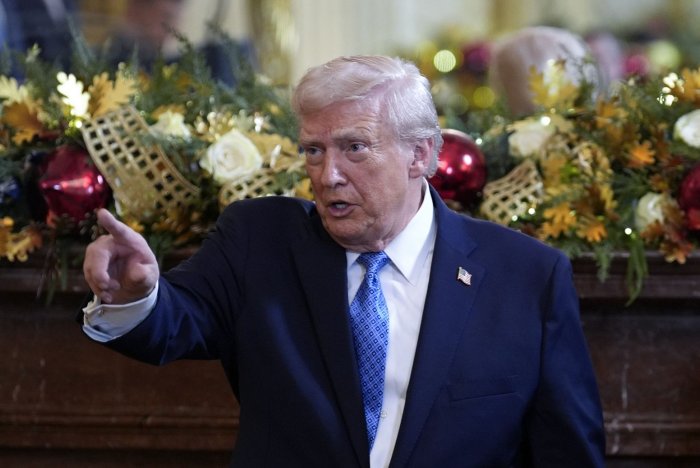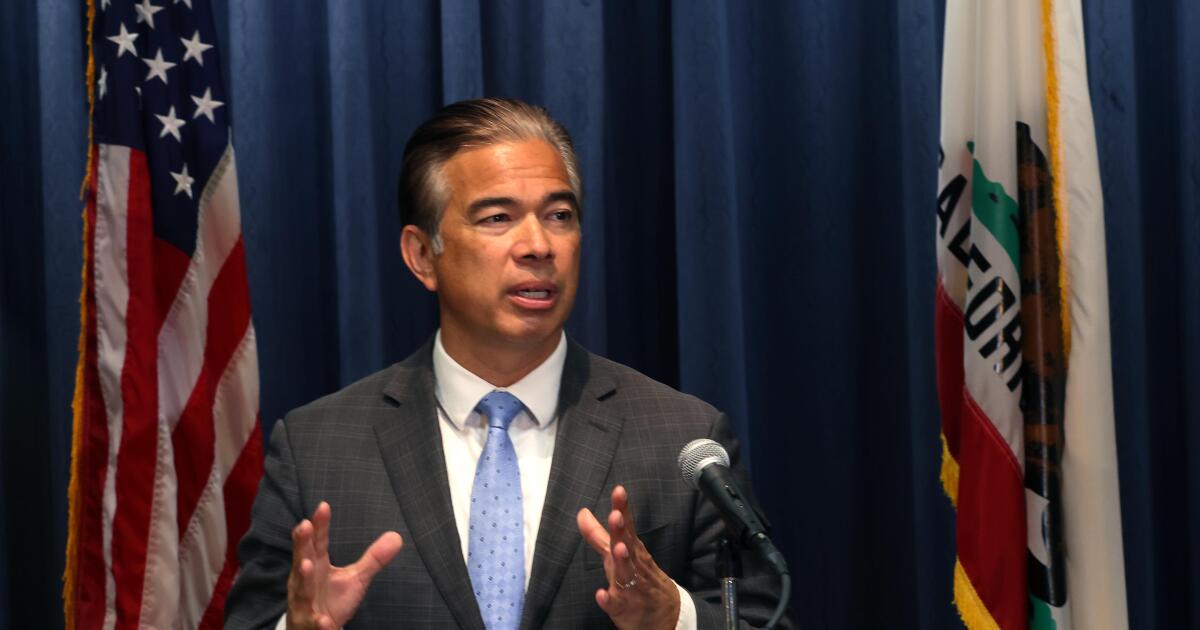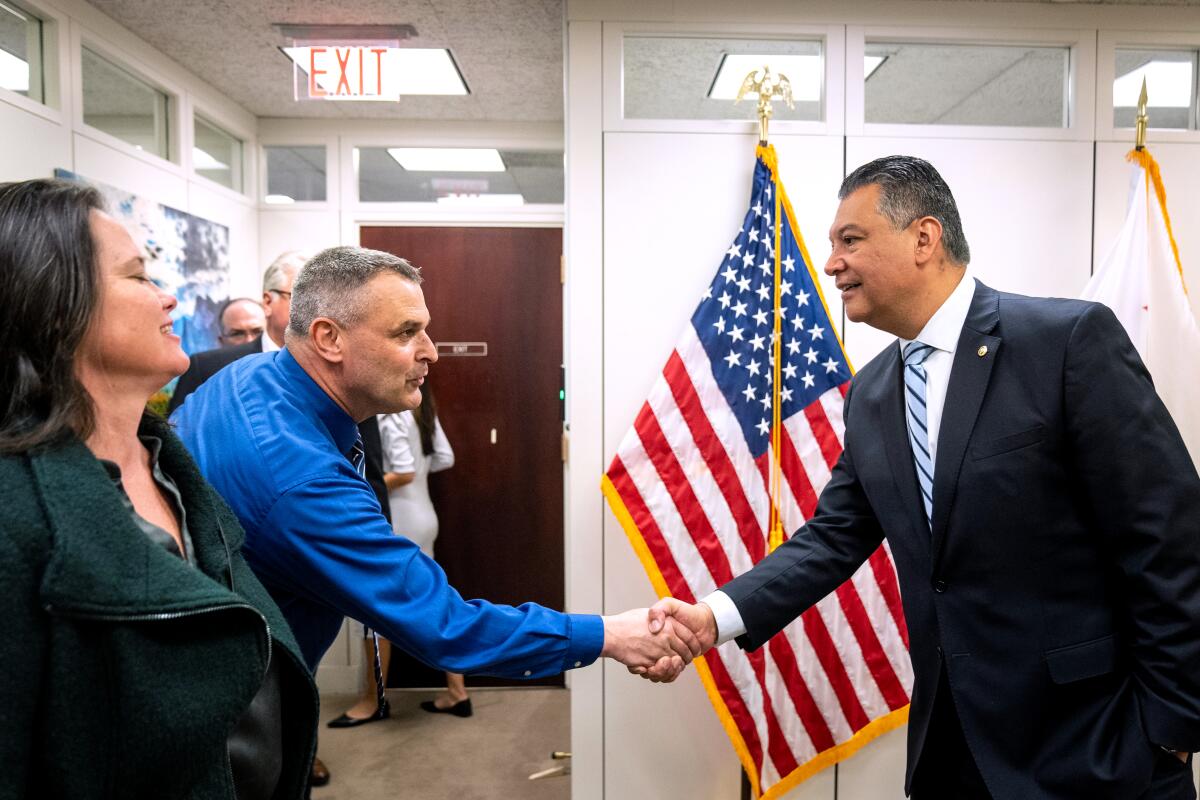Republican nominee George Bush won an overwhelming victory over Democrat Michael S. Dukakis in Tuesday’s presidential election despite a late surge of support for the Massachusetts governor among previously undecided voters and wayward Democrats.
Late returns showed Bush winning a solid majority of the popular vote nationwide and chalking up substantially more than the 270 electoral votes needed for victory. The Vice President swept the South, won all the Border states but West Virginia, took the Rocky Mountain West and gathered in the lion’s share of the electoral votes in the Midwest and Mid-Atlantic states.
“The people have spoken,” Bush told a cheering victory celebration in Houston, then immediately sounded a chord of unity. “A campaign is a disagreement and disagreements divide. But an election is a decision and decisions clear the way for harmony and peace,” Bush said, “and I mean to be the President of all the people.”
For his part, Dukakis–in a concession statement delivered earlier to loyal supporters in Boston’s World Trade Center–set the generous-spirited post-election tone, saying of Bush: “He will be our President and we will work with him.”
All told, according to late returns reported by the Associated Press, Bush had won 37 states to 10 for Dukakis, including the District of Columbia. Among the four undecided states late Tuesday night, Bush maintained narrow leads in California, Alaska and Illinois while Dukakis remained ahead in Washington state.
Thanks Reagan
Bush, recognizing the enormous political advantages of campaigning as the designated heir of one of the most popular chief executives of modern times, thanked President Reagan “for going the extra mile on the hustings” for the GOP ticket.
Bush also made a point of praising his controversial running mate, Sen. Dan Quayle of Indiana, for showing what Bush called “great strength under fire” during the campaign.
Despite the divisiveness of the bitter campaign, Bush said he was sure the country would unite in the aftermath of the election. “I know that we’ll come together as we always have, 200 years of harmony in the oldest, greatest democracy in man’s time on earth,” Bush said.
Will Do ‘Level Best’
In particular, the President-elect pledged to “do my level best to reach out and work constructively with the United States Congress.”
That may well be among the most serious challenges facing the President-elect. Despite Bush’s sweeping victory, Democrats apparently added to their already substantial domination of both the Senate and the House–assuring continuation of a pattern of divided government that has generally paralleled the GOP domination of the White House during the last 30 years.
In the Senate, where Democrats already outnumbered Republicans by 54 to 46, they gained seats in Connecticut, Virginia and Nebraska while losing seats in Mississippi and Montana, according to actual votes and television network projections. They seemed likely to increase their number in the Senate to 55.
Democrats ousted Republican Sens. Lowell P. Weicker Jr. in Connecticut and David K. Karnes in Nebraska, and former Gov. Charles S. Robb of Virginia took the seat being vacated by retiring Republican Paul S. Trible Jr.
Republicans defeated Democratic Sen. John Melcher of Montana, and in Mississippi, Rep. Trent Lott
won the seat now occupied by retiring Democratic Sen. John C. Stennis.
Sen. Lloyd Bentsen of Texas, the Democratic vice presidential nominee, retained his Senate seat thanks to a Texas law that allowed him to seek reelection there even as he ran on the national ticket.
With all but a few incumbents in both parties coasting to easy victories, the Democrats appeared certain to retain their comfortable majority in the House. NBC News projected that the Democrats will outnumber Republicans by 259 to 176 in the House next year, compared to the present lineup of 255 to 177 with three vacancies.
The most stunning congressional upset was the defeat of Rep. Fernand J. St Germain (D-R.I.), chairman of the House Banking Committee, at the hands of a Republican political novice, Ronald K. Machtley.
If the presidential balloting produced an overwhelming electoral victory for Bush, Dukakis nonetheless ran stronger than any Democratic presidential candidate in this decade. He appeared to have carried New York, Rhode Island, Minnesota, Wisconsin, Iowa, Oregon and Washington, as well as the District of Columbia and his native Massachusetts.
He also mounted powerful challenges in such heavily populated states as Pennsylvania, Illinois and California.
Concession Statement
Still, with both CBS and ABC projecting Bush as the winner as early as 6:17 p.m. PST, Dukakis made his concession statement in Boston at 8:20 p.m. PST–just 20 minutes after the California polls closed.
About 30 minutes later Bush, who had run a slashingly negative campaign against the man he labeled “a liberal out of the mainstream,” told a cheering crowd in Houston that in defeat Dukakis had been “most gracious . . . and genuinely friendly in the great tradition of American politics.”
Bush, 64, is the first sitting vice president to win the Oval Office since Martin Van Buren in 1836. And his election to succeed President Reagan means that, for the first time since the Democratic era of Franklin D. Roosevelt and Harry S. Truman 40 years ago, the same party will control the White House for more than two consecutive terms.
Overall, the presidential balloting appeared to reflect the fact that voters feel fairly satisfied with the way things are going in the country–as confirmed by Los Angeles Times/ Cable News Network exit polls. Most voters interviewed in that survey said they wanted to stay the course charted by the Reagan Administration in domestic and foreign policy.
Reaganesque Note
The vice president, who had patiently plotted his run for the presidency ever since losing the GOP presidential nomination to Reagan in 1980, repeatedly promised voters he would continue those policies and sounded a Reaganesque note in victory Tuesday night, saying: “Now we will move again, for an America that is strong, and resolute in the world, strong and big-hearted at home.”
Reagan himself, who retained an extraordinary approval rating in the 55%-60% range as his second term drew to a close, pulled out all stops in campaigning for the election of his vice president.
Exit polls indicated that even though Quayle continued to have unusually high unfavorable ratings among voters, he was not a significant factor in Tuesday’s vote. The selection of Quayle, which had stunned and even dismayed some of Bush’s aides, was criticized repeatedly by Dukakis in speeches and in television commercials during the campaign. And Bush strategists were so concerned that Quayle would be a drag on the ticket that they limited his campaign schedule to smaller cities and towns outside the national limelight.
Late Dukakis Surge
Exit polls indicated a surge of Dukakis support over the weekend, especially among Democrats who had voted for Reagan in 1980 and 1984 and among voters who made up their minds only in the last few days. Dukakis, attempting to squeeze the last drop of help from that trend, used satellite links to beam last-minute television appeals into states where the polls were still open Tuesday night.
But in the end the shift fell considerably short for Dukakis as Bush drew heavy support among men, non-union voters and white voters–especially Southern whites and “born-again” Christian whites, according to the surveys of voters as they left polling places. Early poll figures even showed Bush winning about one-eighth of the black vote, which is more support than Reagan won among blacks.
The Times survey of voters indicated that Dukakis–for all his problems during the campaign–did as well or better than Walter F. Mondale did four years ago when it came to holding the core of the nation’s Democrats, but in today’s political arithmetic that alone is not enough to carry the White House. Among the independents who hold the balance of power, Bush outscored his Democratic rival.
Aggressive Campaign
Bush surged into the lead in his heated campaign with Dukakis by bouncing back from a 17-point deficit in the polls in mid-July with an aggressive, hard-hitting campaign in which he portrayed himself as the new leader of the Reagan revolution and Dukakis as a free-spending liberal who opposed such traditional values as the Pledge of Allegiance and favored such soft-on-crime measures as prison furloughs for convicted murderers.
The effectiveness of the Republican tactics was enhanced by the fact that Dukakis let valuable time slip away after his own nomination in July, was slow to meet the Bush attacks and failed until the final weeks of the campaign to develop a compelling message of his own.
It was apparently too late by the time Dukakis began to respond aggressively to Bush’s attacks and to drive home a populist message that the governor was “on your side.” The vice president, Dukakis declared in the closing days of the campaign, was partial to upper-income voters and his support for a reduction in the capital gains tax from 20% to 15% showed concern not for the average citizen but for the wealthy.
Negative Perceptions
Bush strategists, by contrast, began at the Republican convention last August to press a well-coordinated effort to drive up voters’ negative perceptions of Dukakis, who polls showed was fairly well liked but not very well known by the voters. That the Bush strategy succeeded to an extraordinary degree is indicated by exit polls Tuesday that showed Dukakis with an extraordinarily high unfavorable rating of 46% compared to 47% favorable.
The same polls showed Bush with a relatively high unfavorable rating of 39% himself, compared to a favorable rating of 55%.
Voting experts indicated that fewer than 100 million voters, or a little more than half the voting-age public, were turning out to vote Tuesday. They blamed the low turnout on the negative nature of the campaign, which included harsh attacks by Bush and counterattacks by Dukakis, as well as on a lack of enthusiasm for either candidate.
Moreover, the country is enjoying peace and relative prosperity and there were no overriding issues of the kind that can stimulate a high voter turnout.
Both Exhausted
Both candidates were exhausted as they campaigned right up to the end. Bush, returning to his official residence at a Houston hotel, said he was nervous but felt good about the election and Dukakis declared he felt “terrific” but was glad to be back in Boston.
ABC exit polls showed Bush scored heavily among the following groups: Veterans, people with children, people earning more than $40,000 a year, those with college degrees or some college education, Protestants, residents of farm areas and small towns, and voters who were self-employed or earned salaries instead of working for hourly wages.
Among Dukakis voters, almost 60% said they were voting against Bush rather than for the Democratic nominee. Although the vice president highlighted environmental issues and repeatedly accused Dukakis of failing to clean up the pollution of Boston Harbor, voters who gave high priority to environmental issues apparently favored the governor.
Strong GOP Support
While Bush was falling short of Reagan’s 1980 and 1984 landslides, polls indicated he was drawing about 92% of the vote among those who consider themselves Republicans. He was carrying independents by a margin of 54% to 44% for Dukakis, whereas Reagan won 61% of the independent vote in 1984.
Bush, like Reagan, cut into the Democratic ranks, but the vice president was getting only 17% of that vote, compared to the 24% Reagan got in 1984.
Bush voters said they were looking for strong leadership, experience, a strong national defense and a strong economy. They also favored Bush’s stance opposing legalized abortions and his stand on curbing illegal drugs.
The vice president was relaxed and in good spirits as he and his wife, Barbara, along with 22 members of their family and dozens of friends and advisers, awaited the election’s final outcome at the Houstonian Hotel.
At Bush’s side was former Treasury Secretary James A. Baker III, his longtime confidant and director of his almost flawlessly managed election campaign. Baker is widely expected to be named secretary of state in the Bush Administration, although Bush repeatedly refused to discuss potential Cabinet appointments during the campaign.
Quayle Decision
Baker has made it clear he had no part in the selection of Quayle as Bush’s running mate, the one major decision that Republican strategists considered a negative for the Bush campaign. Baker has said Bush informed him of the selection after he had already told others.
The 41-year-old, boyish-looking Quayle went home to Huntington, Ind., to vote and shake hands with supporters along the town’s main street before settling down to wait for the final outcome in Washington.
“I’m looking forward to being the next vice president of the United States,” he told reporters.
Looks Exhausted
Dukakis, accompanied by his wife, Kitty, and three children, cast his ballot at a housing project in his hometown of Brookline, Mass. He look exhausted and made no statement to about 200 shouting supporters before returning home.
For 50 hours without a break, he had sped by plane across the country, stumping in 11 cities in nine key battleground states in his last-ditch effort to turn things around.
Bentsen, who polls showed was the most popular figure on either ticket, spent Election Day in Austin. Although he was unable to help carry his state for Dukakis, Bentsen is expected to remain a powerful voice in Washington, however. He will retain his chairmanship of the Senate Finance Committee and Democratic sources say his performance on the campaign trail is likely to enhance his influence in party affairs.
Rallied Faithful
Dukakis’ finest hour in the campaign came at the Democratic convention in July, when he rallied the party faithful with a stirring speech that promised a more honest and caring government and attacked Bush for his role in the Iran-Contra affair and other scandals and tied him to Reagan Administration slashes in social programs.
But the Massachusetts governor never came close to stirring such excitement again, even though in the closing days of his campaign he drew large, enthusiastic crowds as he crisscrossed the country in a desperate final effort.
Shortly after the Democratic convention, polls showed Dukakis briefly with a 17-point lead over Bush. But that lead quickly disappeared as the governor appeared to coast in the opening weeks of his campaign, spending at least two days a week at the Statehouse in Boston while Bush was campaigning vigorously and painting his opponent as a liberal far removed from the American mainstream.
Democratic strategists criticized Dukakis for failing to respond early to Bush’s attacks and for assembling a campaign team that included relatively few people experienced in running a presidential campaign.














